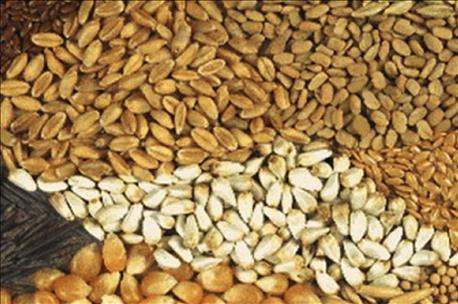
We’re at a low point in the agriculture cycle.
Commodity prices are low, and margins are razor thin. So we need to strategically plan each field like our whole farm depends on it.
You will probably be able to make decent money on a couple of corn and soybean fields, but for those other fields, you might have to consider different crops to make money.
When the growing gets tough, the tough get a calculator.
Your finance partners want to make sure you’re putting all you have into making money this year. Use the following tips to show them how dedicated you are to making money in these tough markets. These five strategies will help you make every field produce a cash crop this next year.
1. Crop Rotation Options

Farmers need to strategically plan each field like their whole farm depends on it.
Every piece of dirt is different in its productivity; based on location, rainfall, and proximity to a buyer. Make a list of different crops you could grow on those fields, then one-by-one figure out which would be most productive.
Look around, too. You might, for example, have a turkey farmer that needs sunflower or birdseed nearby.
Guys around me grow edible beans. The beans are a lot of work, but the farmers make a lot of money by growing one or two fields of them.
It’s good to mix it up, sometimes.
2. Match field with optimal crops
Consult your agronomist and soil scientist to see what your options are for each field. Ask them, based on the soil types of a given field, what they would recommend.
Corn on corn usually isn't profitable in this market. So if you had corn on that field, you might not want to grow it again (since input costs will be more and your yield will be lower).
Ask your agronomist if you should grow wheat, or if you could grow edible beans or some other specialty crop. Agronomists work with lots of producers and know the market well. They come in handy matching optimal crops with your fields.
3. Estimate which crops are most likely to make money
This next tip depends on the buying options where you’re located.
For instance, if there are a lot of options in your area for specialty crops, and you don’t have to haul them hundreds of miles, you’ll be able to pick from a wider range than other farmers. Estimate your yields and costs for each one of those crops, and determine which fields will produce profitable yields.
If you have corn fields, for example, what are your expected yields? 200 bushels? And what are your expected input costs?
Make sure the production costs are covered by the marketing of the crop. You don’t want to go into the banker and say, “Hey, I’m gonna lose money on every field this year!”
4. Find new buyers
Don’t settle for doing the same thing day in and day out.
Feedlots, turkey farmers, organic animal farms, and so on, can offer a nice profit on specialty crops, as these farmers use the crops for spoon-feeding year-round.
I have a neighbor who did a certain thing with his wheat so it could be considered organic. He was able to sell it to an organic chicken farmer at a big premium compared to what wheat was offered at the elevator. It was a few simple steps that gave him that opportunity, too.
Or maybe a local brewery needs barley throughout the year. The point is, there are opportunities to find new buyers if you’re willing to grow new crops.
5. Double crop
Speaking of opportunities, there are ways to generate a second revenue stream off a harvested crop.
I have an example of this myself. I farm next to this guy who has a cattle ranch. He called me, asking if he could put up some electric fence around my field and have his cattle graze for a couple of months. I said sure. Since the yield was low, I discounted him at 35¢ per cattle per day. Around 60 cattle, grazing for two months, gave me close to $9 an acre off that deal—without costing me anything, plus I won’t have to spray for volunteer corn next year which is an additional $8 per acre.
You can also bale your corn stocks, or have somebody else do it, and sell them to a cattle farmer.
Or put a cover crop in, especially after early-harvested crops like wheat. If you sell the crop to a local rancher as a grazing product, you’ll compound your revenue.
My advice? Use your resources, know your neighbors. Basically, don’t be complacent.
There are hidden dollars all over your farming operation. Finding them is your best chance to get through these tough times and back into the golden years.
Need help tracking crops and production costs on your fields? We’ve got you covered.
Listen to a podcast from Scott by clicking on the link below.
Scott is a South Dakota farmer who formerly worked in investment banking on Wall Street. After the commodity markets crashed, Scott took his financial know-how and built a software program for farmers called Cash Cow Farmer, which empowers farmers to master the business side of farming by knowing real-time field-by-field productivity and profitability. Scott consults with farmers all over the United States on risk and financial management, farm strategy and strategic growth. Contact him at [email protected]
The opinions of the author are not necessarily those of Farm Futures or Penton Agriculture.
About the Author(s)
You May Also Like






